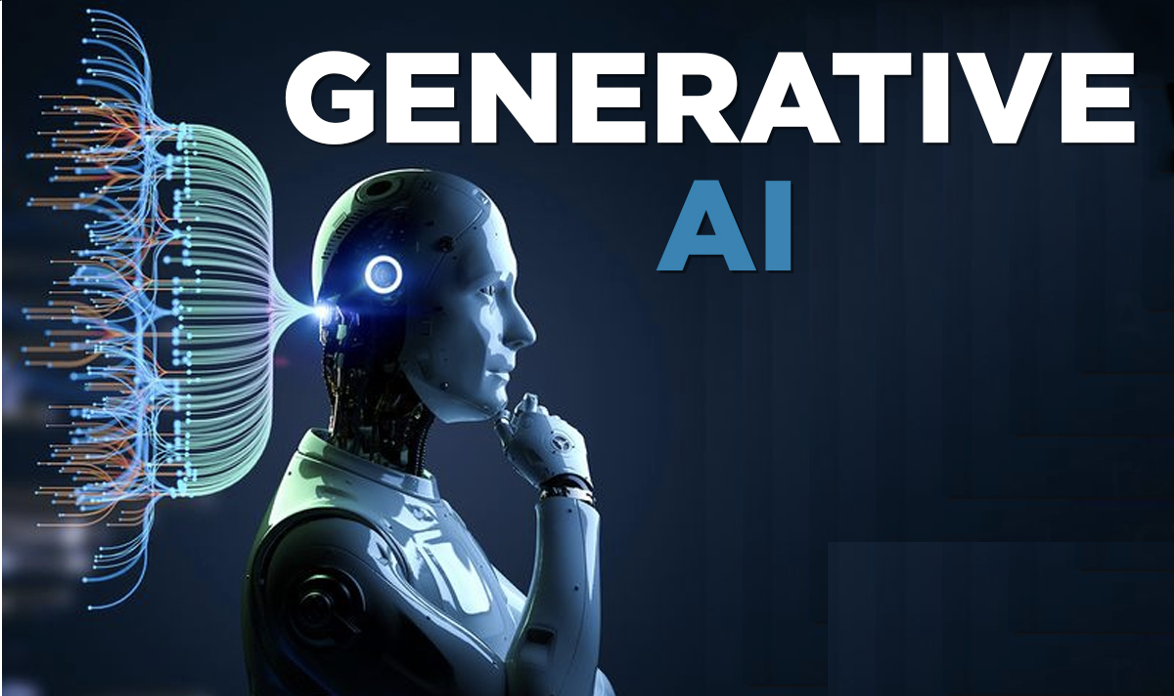How Businesses Can Use Generative AI: 4 Powerful Examples
Business has been transformed by generative AI, which revolutionizes how it operates and innovates. In addition to streamlining workflows, this technology offers endless opportunities for customer engagement. AI generated by algorithms produces content, designs, code, and more based on data inputs, enabling businesses to boost efficiency and creativity in ways that were unimaginable just a few years ago.
Here are four practical examples of how businesses are using generative AI to drive growth and innovation. No matter how big or small your business is, this list will show you how AI can transform your business.
Key Takeaways
-
Generative AI is transforming how businesses create content, design products, interact with customers, and deliver personalized experiences.
-
Marketers are using AI-generated content to improve efficiency and reach a larger audience.
-
AI-driven design tools are innovating product development by offering faster, customizable, and cost-effective solutions.
-
Companies are using AI chatbots to enhance customer service while reducing operational costs.
-
E-commerce platforms and apps like Amazon and Spotify are leveraging AI to deliver personalized recommendations that boost sales and improve user experiences.
1. Content Creation and Marketing
In the competitive world of digital marketing, Generative AI is becoming a valuable asset for businesses seeking to create engaging and consistent content. From blogs to social media posts, AI-driven tools can generate high-quality text in seconds, freeing up time for marketing teams to focus on strategy.
Example in Action:
- Copy.ai and Jasper AI are tools that help marketers generate creative content like blog posts, email copy, and social media captions tailored to different tones and styles.
- BuzzFeed has used AI to generate quizzes and interactive content that drives user engagement, making it easier to publish content at scale while keeping it personalized.
Benefits:
- Efficiency: Marketers can generate content faster, reducing time spent on brainstorming.
- Cost Reduction: Lower costs by automating parts of the content creation process.
- Personalization: AI can tailor content to specific customer personas, boosting relevance and engagement.
2. Product Design and Development
Generative AI can revolutionize product design by creating new prototypes, designs, or solutions based on specific parameters. Whether in fashion, automotive, or architecture, AI can analyze customer preferences, market trends, and design aesthetics to suggest new product ideas.
Example in Action:
- Nike has explored AI to personalize sneaker designs based on user data, allowing them to produce footwear that matches customer preferences in style, fit, and performance.
- In architecture, Spacemaker AI allows architects and urban planners to use AI algorithms to design building layouts and optimize space usage in urban environments.
Benefits:
- Speed to Market: AI can help businesses create and test designs faster than traditional methods.
- Customization: AI-driven designs can cater to individual customer needs, offering personalized products at scale.
- Innovation: AI helps generate creative ideas that human designers may not have considered, pushing the boundaries of innovation.
3. Customer Support and Interaction
Generative AI is being used to enhance customer support through the creation of smart chatbots and virtual assistants. These AI-driven tools can handle customer inquiries, complaints, and feedback with human-like responses, improving customer satisfaction and reducing support costs.
Example in Action:
- ChatGPT and OpenAI’s GPT models are increasingly being implemented by businesses to automate customer service, answering customer queries and resolving issues 24/7.
- H&M uses AI-powered virtual assistants to help customers with size recommendations, product availability, and order tracking.
Benefits:
- 24/7 Availability: AI chatbots offer round-the-clock service without the need for human intervention.
- Cost Efficiency: Reduces the need for large customer support teams while maintaining high service levels.
- Enhanced Customer Experience: AI assistants provide faster, more personalized responses to customers.
4. Personalized Recommendations and E-Commerce
E-commerce platforms can benefit immensely from Generative AI by offering personalized product recommendations and experiences to users. AI-driven algorithms analyze purchasing behavior, browsing history, and user preferences to suggest products that customers are more likely to buy.
Example in Action:
- Amazon uses generative AI to refine its recommendation algorithms, suggesting products based on what similar customers have viewed or purchased.
- Spotify employs AI to curate personalized playlists for users by analyzing listening habits and preferences, making their experience more tailored and enjoyable.
Benefits:
- Increased Sales: Personalized recommendations lead to higher conversion rates as customers are shown products or services they are interested in.
- Customer Retention: Tailored experiences keep customers engaged, increasing brand loyalty.
- Data-Driven Insights: AI analyzes vast amounts of customer data to offer recommendations, leading to deeper insights about customer behavior.
Frequently Asked Questions (FAQs)
1. How does generative AI work?
Generative AI uses algorithms and data models to generate new content, designs, or ideas. It learns from input data to create text, images, code, or other outputs that meet specific criteria.
2. Can generative AI replace human workers?
While generative AI can automate certain tasks, it is most effective when used to augment human creativity and efficiency. It helps by reducing time spent on repetitive tasks, allowing humans to focus on more strategic work.
3. Is generative AI suitable for small businesses?
Yes, many generative AI tools are scalable and affordable, making them suitable for businesses of all sizes. Small businesses can use AI to automate marketing, improve customer support, and personalize user experiences.
4. What are the challenges of using generative AI in business?
Some challenges include the need for high-quality data to train the AI models, managing biases in AI-generated outputs, and ensuring ethical use of AI technologies.





Leave a Reply